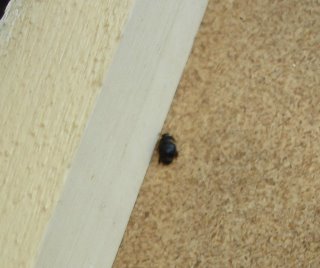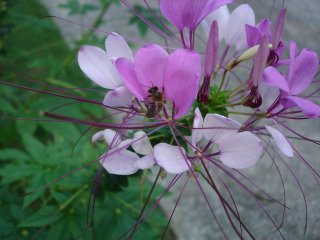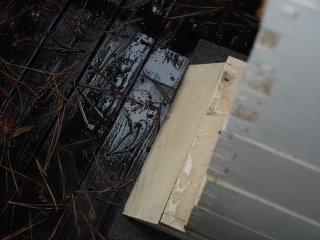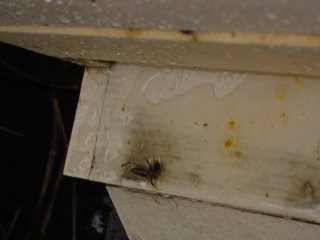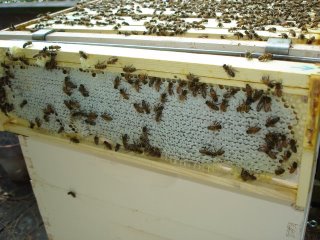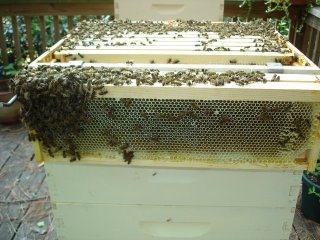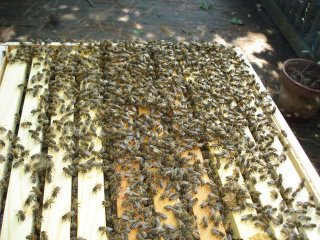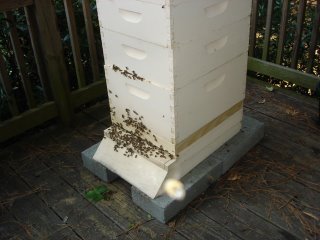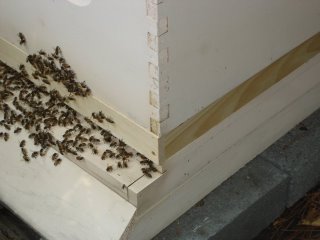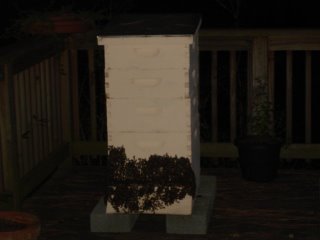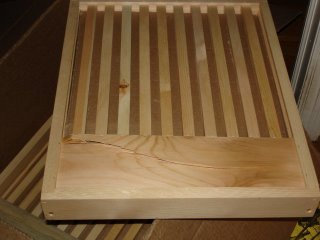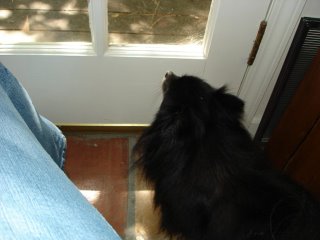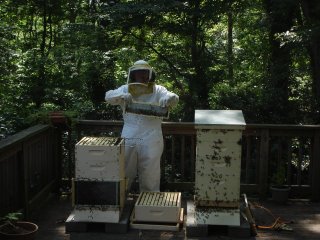
I've kept bees since Easter, 2006 - that's over two months now and I haven't been stung. Every morning I go out to the hives and stand between them and take pictures or just observe the bees. When I do this, I'm in my regular street clothes - no beesuit, no protection. Sometimes the bees send out a guard bee to send me back into the house, but most of the time they ignore me.
Every time I work on the hives in full suit, I end up with bees in the house. I imagined that they must come in on my beesuit, so I started taking the suit off outside on the deck and leaving it there for several hours before bringing it in.
My little dogs are in the yard all the time and have very long coats. Maybe the bees come in on their fur.
Inevitably I have bees in the house. Here's a picture of one on the paper towel roll. Often the bees are drawn to lights, just like moths. When I know one is in the house, it is often at the end of the day when only a light or two is on in the house. Then I'll hear the bee and know that she is near one of the lights that is on. They buzz and fly into the light as moths do.
Sometimes I can cover the bee with a glass and slide a postcard under the glass, trapping the bee. When that happens I can release the bee outdoors.
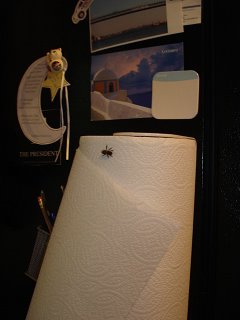
Tonight I came in from dinner with friends to find a bee buzzing around the kitchen lights and a box from Amazon on my doorstep. I ignored the bee and opened the box. In it was in fact a book I had ordered on beekeeping. I set the book on the counter and went to work on my computer for a while.
I returned to the kitchen and stood at the counter, reading the book. I took a step while I was reading and felt a sting in the bottom of my big toe.The light bulb bee had landed on the ground, dying, and I had stepped on her. She spent the last moments of her life giving me my first bee sting since becoming a beekeeper!

